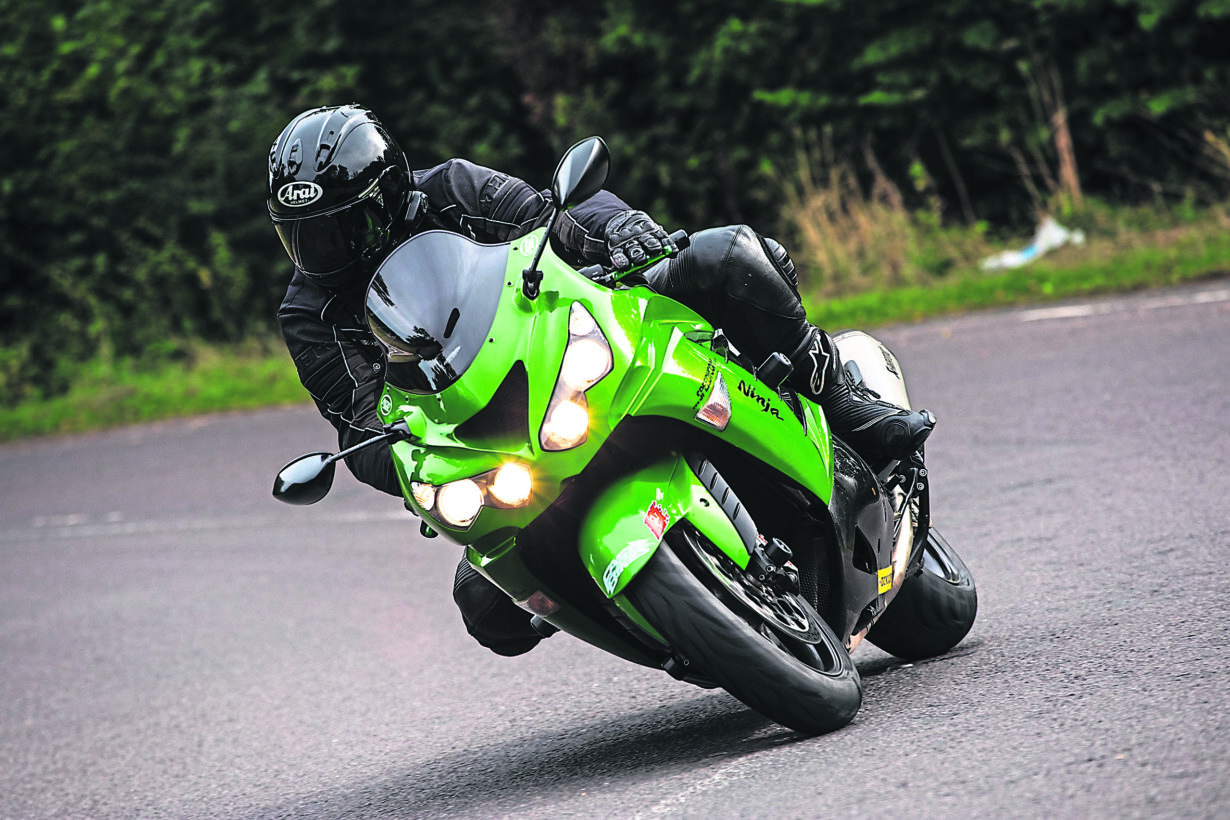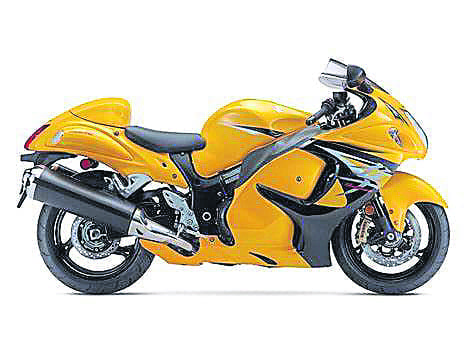Jon Urry tells us what we need to know…
If you want serious performance, you need a ZZR…
There is an old adage that goes, ‘There is no replacement for displacement’ – a statement that rings very true when it comes to Kawasaki’s mind-bending hyperbike, the ZZR1400. Although when the supercharged H2 SX was launched in 2018 the aging ZZR fell out of favour and was subsequently dropped from the firm’s model range as it didn’t meet Euro5 requirements, a flashy forced air induction system on a litre engine can only get you so far in terms of smooth torque. Nope, if you want the ultimate grunt-monster that delivers mountain-levelling amounts of mid-range in an ultra-smooth fashion, there is only one way to get it – buy a big capacity hyperbike. If this appeals, and you want it to also contain a load of modern tech, then the ZZR is by far and away your best option.
Enjoy everything MSL by reading the monthly magazine, Subscribe here.

Initially launched in 2006, the first generation of ZZR1400 is a bit forgettable as although it is (predictably…) very fast, it is also very much old-school in its approach and lacks the modern electronic systems. And it is this fact that sets the ZZR aside from its main rival, the Hayabusa, as where Suzuki basically stood still with its hyperbike’s development, Kawasaki actually allowed the ZZR to evolve. Okay, this wrong has now been rectified, but you need to spend £17,999 on a new or £15,000 on a used current-generation Busa to gain traction control, where just £6000 will get you a ZZR with this on it. If you are a canny used bike buyer, that’s a bit of a no-brainer decision…
If you have never ridden a hyperbike before, initial impressions of the ZZR can make it seem a bit unappealing. There is no denying its look is a touch dull and its sheer size is also quite intimidating. Tipping the scales at 265kg, the Kawasaki is a big old bus and despite a reassuringly low seat height of 800mm, pulling it up and off its side-stand does take effort. But this weight has its benefits, something you notice as soon as you get properly rolling.
Once out of town, where admittedly the Kawasaki can feel a bit top-heavy and ponderous, the ZZR’s weight really starts to play into its hands. Absolutely rock-solid at all speeds (even 186mph) in a straight line, aim the ZZR at a set of sweeping bends and although not the fastest turning it is incredibly solid and sure-footed. Its bulk means it’s no scratcher, but if you ride mainly on A-roads it is an absolute joy and its stable chassis gives you bags of feedback and confidence. Although the Performance Sport model comes with an Öhlins shock, the stock bike’s unit is fully adjustable so the benefits in terms of handling are fairly minimal. However, the fact the Öhlins unit is fully rebuildable where the stock one isn’t should be a consideration for used buyers. A replacement shock will be in the region of £500-£700 for a quality one where getting the Öhlins item refreshed will be closer to £250.

As the miles click past (very quickly if you want) it is hard not to be impressed by the plushness of the ZZR. Not only is the suspension set for comfort, also the seat is beautifully squishy and the riding position sporty without being over the top. It’s a great bike for devouring miles on and even pillions are fairly well catered for. And a major factor in this overall feeling of ease is the astounding motor.
Able to pull top gear from as little as 3000rpm, the inline four is just one huge turbine-like producer of torque that is not only blisteringly fast but also incredibly flexible. Thanks to the genuine 148Nm on tap, gear changes are kept to a minimum and once you are over 30mph, it is effectively a big twist-and-go. And a bloody fast one at that!

You really do need to treat the ZZR’s throttle with respect. Not so much due to the outright power as the traction control system is pretty good, but more down to the fact the speeds creep up imperceptibly as the motor is so smooth and that makes being caught doing silly velocities a very real possibility. To be fair, this is always an issue with a hyperbike but where the H2 SX has a few dips and peaks in its power delivery that give you an indication of where you are at, the ZZR’s output is just so smooth you never really get this help – officer…
There is no denying that owing a ZZR1400 requires a high degree of restraint but if you are after a bike for touring Europe on it is a great option. Sitting at constant motorway speeds is effortless (maybe go via an autobahn to allow it to stretch it legs…), overtakes require simply a small extra application of throttle, and once you reach the twisty roads, the chassis is more than up for a bit of fun. Fast, versatile, and reliable, the Kawasaki ZZR1400 is one heck of a used bike for a very reasonable amount of money.

Price guide: £5000-£11,995
Cheapest private: £5250
14,171 miles. Some paint fade and a bit of wear and tear
Our choice private: £6000
19,145 miles, just serviced and very clean with a good service history
Cheapest dealer: £6350
17,640 miles, 2012 bike in white/blue and in beautiful condition
Our choice dealer: £9500
9057 miles, lovely low mileage Performance Sport with a new MoT
Ex-demo: n/a
Other things to know…
- Model updates
Although the ZZR1400 has been around since 2006, the 1441cc bikes are radically different to the early 1352cc model. Launched in 2012, this bigger capacity and more tech-heavy generation was only updated in 2016 with small engine and ECU mods to allow it to pass Euro4 and a new dash, so nothing to really to write home about.
- Performance Sport editions
The Performance Sport variant first arrived in 2014 and features an Öhlins shock and road-legal Akrapovic exhaust end cans. In 2016 it received the same Euro4-pleasing updates as the base ZZR1400, but the Sport also gained braided brake and clutch lines and new Brembo M50 calipers with a radial master cylinder to sit alongside the Akra exhausts and Öhlins shock. A Sport will set you back £500-1000 more than a base bike.
- Servicing
The ZZR1400’s clever monocoque chassis makes servicing an absolute nightmare, especially when you are talking a big one, as there is next to no room. Getting the plugs out (every 7500 miles) is tricky, but the valve clearances (15,000 miles) is a right fight that will set you back about £800. Always check a bike’s service history as although the engine is under-stressed, these checks do need to be performed at the required intervals to ensure reliability.
- Variations
Kawasaki did like to give owners options with the ZZR and aside from the Performance Sport, which is a separate model in its own right, there were also Performance editions. The Performance just gains Akrapovic exhausts from the parts and accessories catalogue (the same as on the Sport) and a taller screen, pillion seat cover and tank pad.
- Brakes
Although the Performance Sport model comes with Brembo calipers (on later models) and braided lines where the stock model has Nissin units and rubber lines, they suffer from the same issues on used bikes. As the ZZR is both heavy and fast, the discs tend to wear out and so do the pads. Check both have plenty of meat left on them as new OE discs are £279 each from Kawasaki. If you are buying a stock model, consider uprating the brake lines to braided units for safety.
- Corrosion
A lot of ZZR owners take their bike touring and that means being ridden in all conditions. As a result, corrosion can be a bit of an issue, especially on the radiator. Always check this area well for any signs of leaks as a new unit is £795 from Kawasaki! Don’t just assume all is well behind the fairing, get on your hands and knees and with a torch give it a good inspection as rust can set in where water is trapped.
- Cam chain tensioner
The ZZR’s cam chain tensioner is always a bit noisy when first starting the bike. However, if the rattle persists then be a bit concerned as that isn’t normal. It may just need a new tensioner or there may be something a bit more untoward…
- Accessories
A fair few ZZRs come with a top box fitter or panniers, which is good to see, and a lot also have a taller screen as the OE unit is quite short. Heated grips are common (Kawasaki did sell aftermarket ones) and also replacement exhausts and a (very helpful) centre stand. A few owners fit items to remove the speed restriction (a TRE or via an ECU remap) but these are rare and for road riders, a bit of a waste of time.
Also consider these:

2012 BMW K1300S
Private: £7400 Dealer: £8000
Introduced in 2009, the K1300S has an advanced electronics package but is a little too touring-orientated to be fun. Fast, just lacking a ‘wow factor’
Engine: 1298cc, l/c, 16v inline four
Power: 163bhp @ 9250rpm
Torque: 131Nm @ 8000rpm

2013 Suzuki Hayabusa
Private: £6499 Dealer: £7200
The Busa has outlived the ZZR and despite being far more analogue, is still an amazing machine. ABS arrived in 2013 alongside uprated Brembo brakes
Engine: 1340cc, l/c, 16v inline four
Power: 178bhp @ 9600rpm
Torque: 143Nm @ 7000rpm

2008 Honda Blackbird
Private: £3600 Dealer: £4200
The choice of the speed junky who also wants refinement and a low price tag, the Blackbird is old but a brilliant sports tourer with excellent build quality and reliability
Engine: 1137cc, l/c, 16v inline four
Power: 139bhp @ 9300rpm
Torque: 115Nm @ 7100rpm






